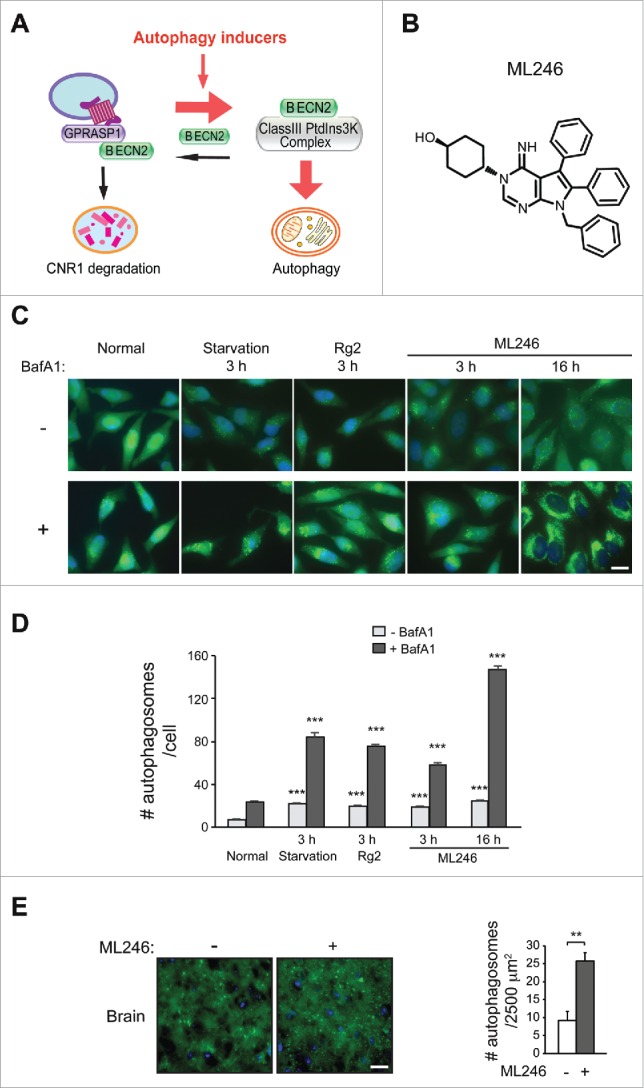Figure 3.

Identification of novel brain-penetrable autophagy-inducing compounds. (A) Competitive recruiting model of BECN2 by the 2 lysosomal degradation pathways: inducing autophagy shunts BECN2 away from the BECN2-GPRASP1 complex, and thus attenuates lysosomal degradation of CNR1 and maintains its responsiveness. Red arrows, pro-autophagy; black arrows, pro-CNR1 downregulation. PtdIns3K, phosphatidylinositol 3-kinase. (B) Chemical structure of ML246. (C and D) Representative images (C) and quantification (D) of GFP-LC3 puncta in HeLa cells stably expressing GFP-LC3 cultured for 3 h in normal or starvation medium, or treated with Rg2 or ML246 in normal medium for 3 h or 16 h, in the presence or absence of bafilomycin A1 (BafA1). Results represent mean ± s.e.m. Statistics are comparing the indicated value with or without BafA1 to the one under the normal condition. Blue, DAPI; scale bar: 20 μm. (E) Representative images (left) and quantification (right) of GFP-LC3 puncta in the brain of GFP-LC3 transgenic mice injected with vehicle or ML246. Results represent mean ± s.d. Scale bar: 25 μm. N>100 cells or N ≥ 4 mice. **, P < 0.01; ***, P < 0.001 (t-test).
